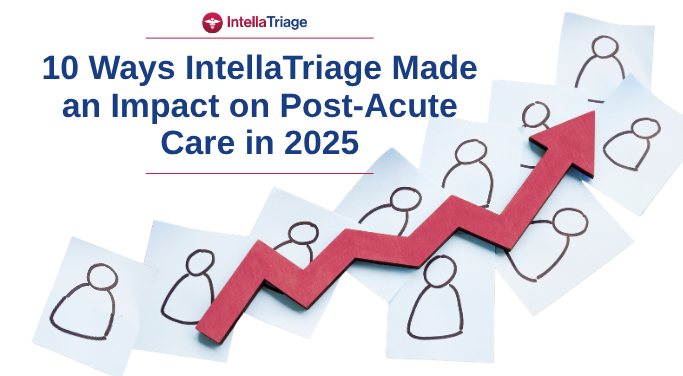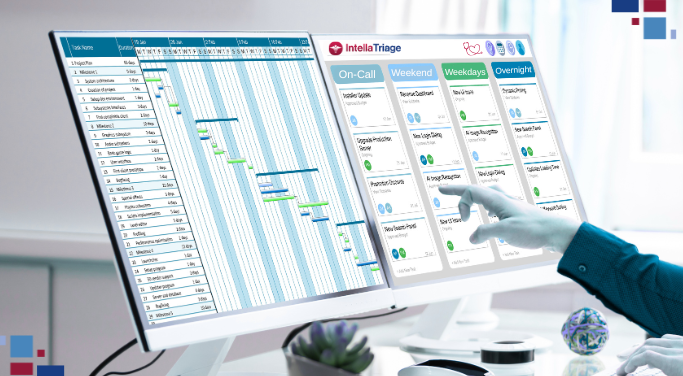Earlier this month, we discussed the impact of short-staffing shifts for healthcare workers. Splitting more patients between fewer nurses results in exhaustion, job dissatisfaction, and frustration: all the ingredients for premature career burnout. However, this isn’t the only consequence of having fewer nurses on the floor. These short-staffed shifts also jeopardize the health and safety of patients. Today, we will explore the ways in which nurse staffing affects patient outcomes.
Nurse Staffing and Patient-Centered Care
First, let’s consider how staffing shortages negatively impact the abilities of nurses. Research shows that when nurses have a smaller number of patients at once, they have time to take breaks. They’re also able to divide tasks between other RNs and CNAs. This balance provides the breathing room needed to critically think through each decision, ask questions when needed, and double-check important details. Therefore, nurses with a limited number of patients provide better care that is centered around each patient’s unique needs. They are also better equipped to conduct accurate assessments, observe patients for changes in condition, and respond to requests.
As the number of patients increases, the quality of care rapidly declines. A cross-sectional study of 197,961 admissions and over 176,000 shifts found that “staffing of RNs below target levels was associated with increased mortality for patients.” Why does a lower number of RNs result in death among patients?
Causes of Poor Patient Outcomes
In an article titled “Patient Safety: A Shared Responsibility,” Karen A. Ballard, MA, RN examines the various factors that contribute to the relationship between poor patient outcomes and short staffing.
Errors
Back in 1999, The Institute of Medicine defined patient safety as “freedom from accidental injury.” In the same statement, its leaders called the United States healthcare system “fractured” and “prone to errors.” While things have undoubtedly improved since the 1990s, errors remain a key concern for patient safety. Some of the most common mistakes in care include:
- 28% of adverse medication reactions are preventable
- 20% of patients in tertiary care centers undergo an adverse event
- 42% of life-threatening events in a healthcare setting are preventable
- Between 10% and 30% of lab test results are incorrectly classed as “normal”
To address these issues, nurses, doctors, and support staff must be properly trained and supported. However, unbalanced nurse-patient ratios create the opposite effect.
Exhausted and Distracted Staff
The American Nurses Association (ANA) explains that patient injuries and errors, nurse staffing shortages, and the nationwide nursing shortage all contribute to employee burnout and poor patient outcomes. When nurses are pulled in several different directions, they are more likely to make mistakes. They’re also less likely to notice important symptoms, protect patients from fall risk, and accurately record interactions.
Other patient issues associated with poor staffing ratios include:
- Increased length of stay
- Pressure sores
- Injuries and falls
- Avoidable complications
- Readmission
Perhaps most frightening of all is the aforementioned increased risk of mortality. According to the ANA: “for each additional surgical patient in a nurse’s workload (above the baseline), the likelihood of patient death within 30 days increases by 7%.”
It is therefore the responsibility of all members of the healthcare system – including leadership, supervisors, educators, and staff – to do their part in protecting patient welfare.
Support for Nurses Improves Patient Outcomes
Times are difficult for healthcare workers. According to a survey by the American Nurses Foundation, more than 20% of nurses said they planned to leave their positions within six months. However, the national trend paints a promising picture of new talent on the rise. In 2020, enrollment in bachelor’s-level nursing programs has increased by 5.6% over 2019. This means that a total of 250,000 students are waiting in the wings for employment in the healthcare field. As these new nurses enter the workforce, organizations must take the necessary steps to protect them from burnout.
A Simple Nurse Staffing Solution
One of the primary issues among nursing staff is answering the phone. On a forum for nurses, one poster asked, “How are you supposed to answer the phone?” The responses clearly illustrated the frustration from the nursing staff at hospitals, hospices, and eldercare facilities:
“If it’s slow, ‘Name of hospital, ICU, this is Konni, can I help you?’ If it’s busy, ‘ICU, this is Konni, can I help?’ If it’s crazy, ‘ICU, Konni.’ If it’s an in-house call, I try to remember to say North or South, but I don’t always.”
“Discharge planners can tell if we’re busy and pick up on our stressed speech – especially if the initial call went to answering service as we were all on phones. Thinking positively prevents me from projecting my frustration… will rant AFTER phone hung up and colleagues off the line.”
In response to a blog post titled “Why Does No One Answer the Phone in Hospitals?” one commenter wrote, “We all have our own (busy) jobs to do. I am not there to answer the phone or sort notes… There is enough clinical work to do on a busy ward (with limited staff and resources) than for me to get sucked into someone’s complicated admin problem, grievance, request for missing notes, bed status, dinner order, scan time change, or relative update. It is entirely appropriate for calls to be handled by someone employed to do so.”
Feeling stressed and overwhelmed is only worsened by additional responsibilities. Answering the phones – especially in the middle of a hectic moment – can contribute to job dissatisfaction and increased levels of fatigue. That’s why IntellaTriage has designed a service to alleviate nurse stress, reduce staff turnover, and decrease burnout in your organization.
Improved Patient Outcomes and the Highest Quality of Care
IntellaTriage offers qualified nurse triage services for physician groups, health systems, medical practices, home health, hospice care, ACOs, and more. Our 24/7 triage services are provided by a team of licensed, registered nurses. We ensure that your patients receive top-quality care at all hours: day or night.
Our team becomes an extension of your own. By using gold-standard protocols and recording interactions in your EMR, IntellaTriage’s nurses address up to 80% of concerns with home care recommendations. This elite level of care is just one phone call away, meaning that while your patients’ issues are addressed, your nurses can focus on other tasks.
Transform your organization. Contact IntellaTriage for a complimentary consultation.
Contact Us for a Consultation
Ready to optimize your triage process? Reach out to us today for a consultation tailored to your needs. Let’s elevate your patient care together.
More From The Blog
In 2025, post-acute care entered a new era of accountability and transformation. Hospice and home health providers faced the rollout of new quality measures, mounting documentation demands, and continued pressure from shrinking margins and workforce shortages. Families expected faster access and more compassionate communication, while clinicians needed real relief from after-hours strain. At the same [...]
For hospice and home-health organizations, staffing after-hours shifts presents a unique challenge. Patients’ needs don’t magically pause between office hours, yet many agencies still rely on outdated scheduling models that leave nurses exhausted, escalation rates high, and patient satisfaction vulnerable. In this post, we’ll explore how thoughtful scheduling, strategic outsourcing, and nurse-first triage support can [...]
Why Nurse-First Care Will Always Matter More We are drawing a line in the sand. No. AI cannot accomplish everything. Sure, you could let AI answer your after-hours calls. But ask yourself: why would you want to if you don't have to? On the other end of that phone is not just a "call" — [...]









